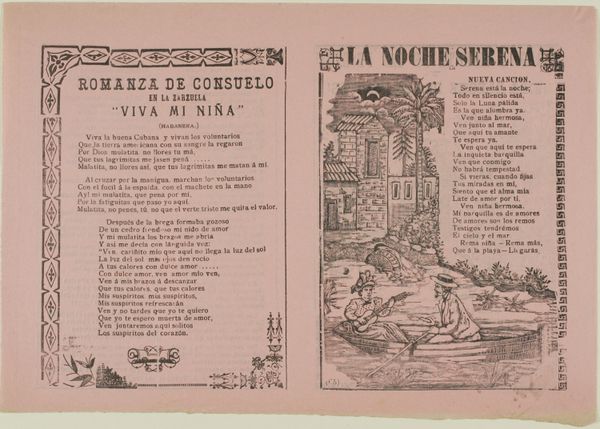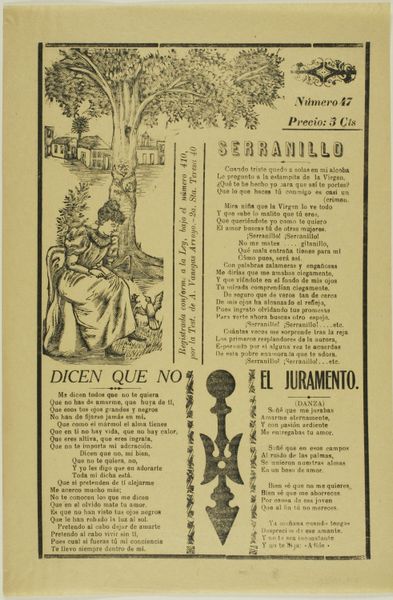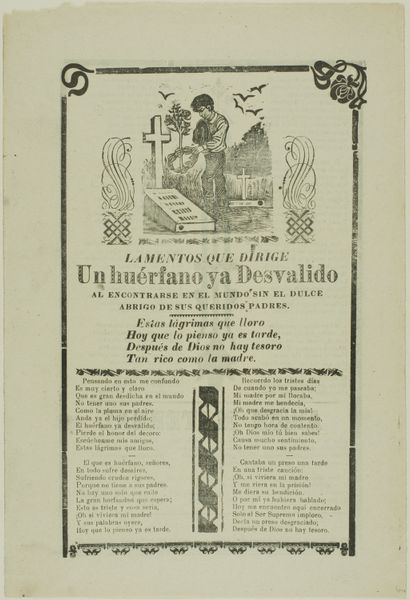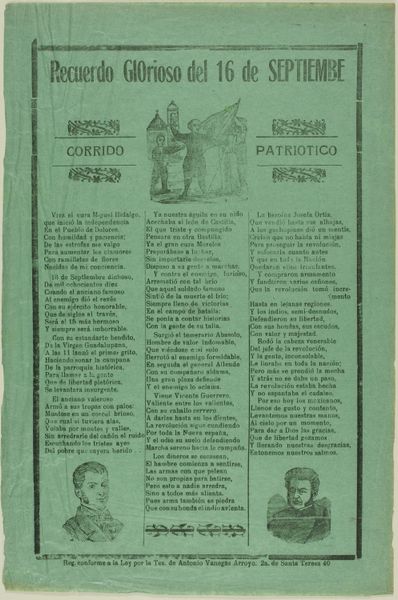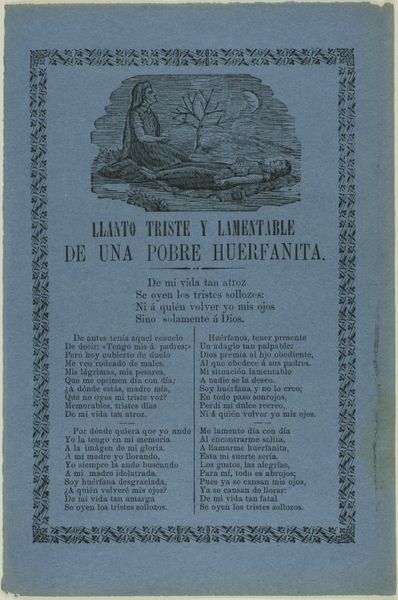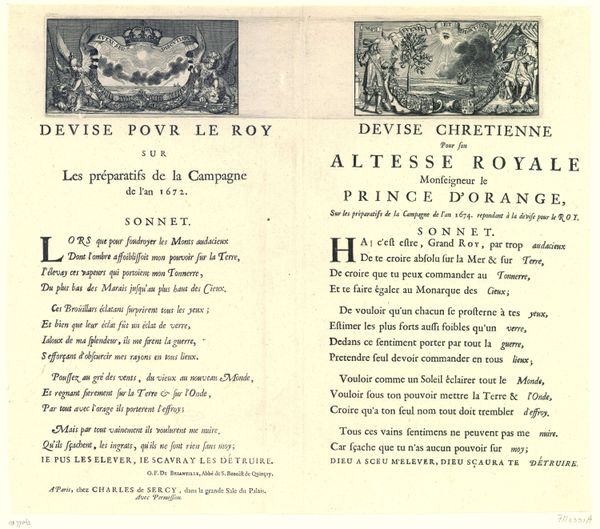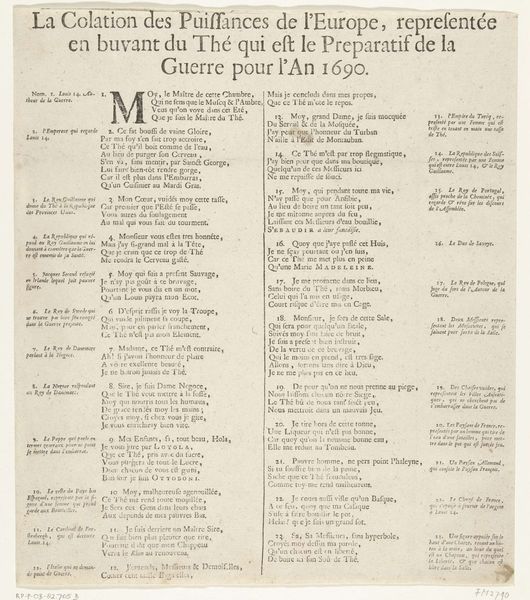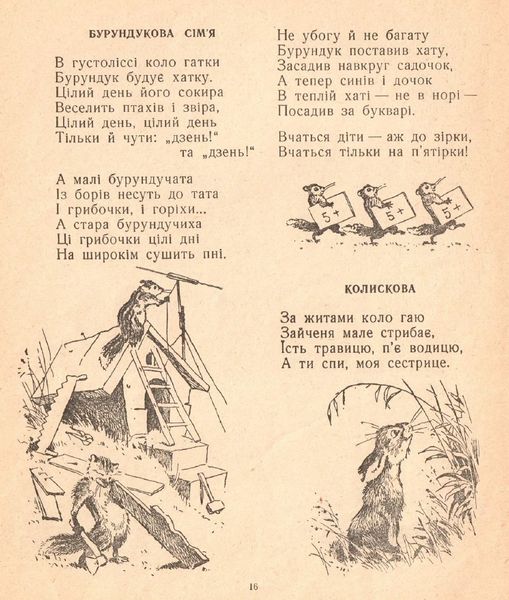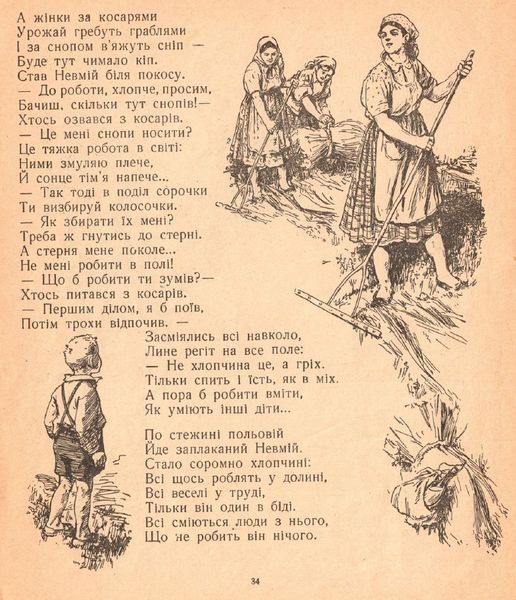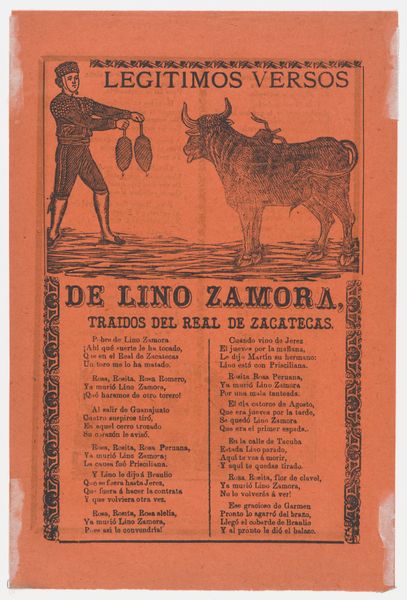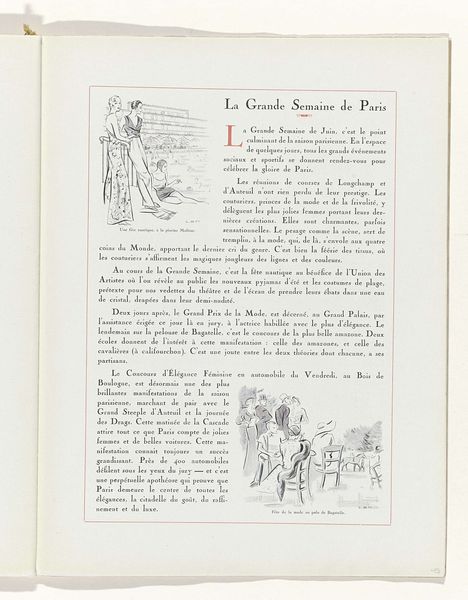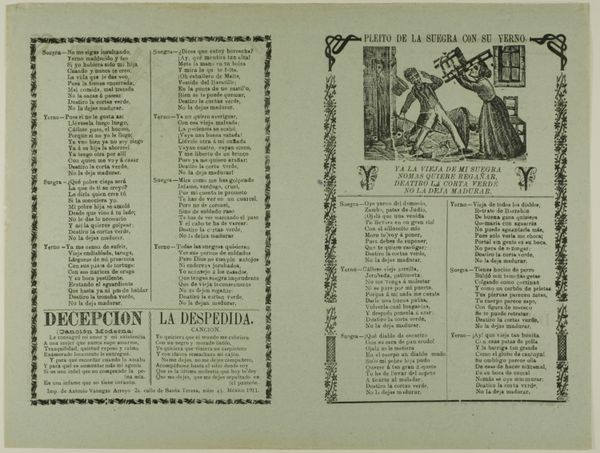
Broadsheet with verse relating to Don Luis Cabrera ('scourge of the nation') who is shown standing in the center wearing a top hat 1920
0:00
0:00
drawing, graphic-art, print, poster
#
portrait
#
drawing
#
graphic-art
#
narrative-art
# print
#
mexican-muralism
#
poster
Dimensions: Sheet: 12 in. × 7 11/16 in. (30.5 × 19.5 cm)
Copyright: Public Domain
Curator: Here we have a broadside from 1920. It's titled "Broadsheet with verse relating to Don Luis Cabrera ('scourge of the nation') who is shown standing in the center wearing a top hat," and it’s attributed to Manuel Manilla. It's currently part of the Metropolitan Museum of Art's collection. Editor: My first impression is that it’s strikingly graphic, almost stark in its presentation. The color, combined with the harsh lines of the figure and the densely packed text, gives it a very urgent, almost angry feel. Curator: That’s a good read. As a broadsheet, its primary function was dissemination. This wasn't created for the walls of a gallery, but to be circulated, to inform and perhaps inflame public opinion about Cabrera. These types of posters or flyers had significant reach in a society that was not completely literate at the time. The verses often conveyed as much of the message as the visual image itself. Editor: Exactly. The figure itself, rendered in simple lines, takes center stage, dominating the composition, yet, it looks defeated. We see his top hat, the garb of respectability, combined with his posture, seemingly tells a story of shame and loss of power, further emphasizing his condemnation. Curator: Consider also the medium. Printmaking allowed for mass production. Therefore this image probably appeared all over Mexico City to solidify a particular viewpoint of Cabrera during the 1920s, a turbulent and pivotal time in the country’s post-revolutionary period. The distribution strategy is critical here. Editor: Right. I was also struck by how this broadsheet plays on dualities, his physical presentation indicating prominence coupled with his defeated stance revealing moral corruption, showing someone brought low by circumstance or behavior. It encapsulates a moral narrative in its basic structure and presentation. Curator: Absolutely, this item serves as an artifact capturing sentiments in 1920 around Mexican muralism. The convergence of narrative, political critique, and accessible medium reflects Mexican muralism's core intentions and essence. Editor: I’m walking away contemplating how formal composition can serve overt social criticism, and perhaps even cement opinions across diverse societal demographics. Curator: Yes. I appreciate that this allows us to reevaluate print’s lasting contribution and relevance throughout society.
Comments
No comments
Be the first to comment and join the conversation on the ultimate creative platform.
